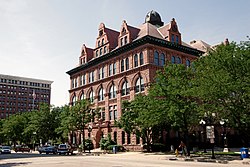Architecture
Peoria City Hall was designed and built by Reeves and Baillee in 1897 for US$271,500. [3] [4]
The Flemish Renaissance structure was designed so that any one of its four sides could serve as the front. [3] [5] The exterior is red sandstone from the Lake Superior region, quarried in 1890. [3] [6]
The Victorian cupola bell tower from the original city hall building is at the peak. [3] [4] The 4,300-lb bell was built in 1865. [7]
During construction, a cornerstone of the building was left open for residents were to drop in personal or historic items that would be sealed inside. [8]
The city hall was dedicated January 5 to January 7, 1899. [2] At the ceremony, Civil War hero turned mayor Maj. John Warner said, “Chicago has one larger and far more expensive, but gloomy and dark within; while this is lightsome, bright and cheerful in every department.” [8]
The interior has a marble staircase, ironwork railings, and stained glass windows. An 1889 statue “Love Knows No Caste” by artist Fritz Triebel is visible in the front hall. [7]
In 1912, a mural was commissioned. The interior mural depicts muses of learning, peace, and medicine along with symbols of the community and its industries. [8]
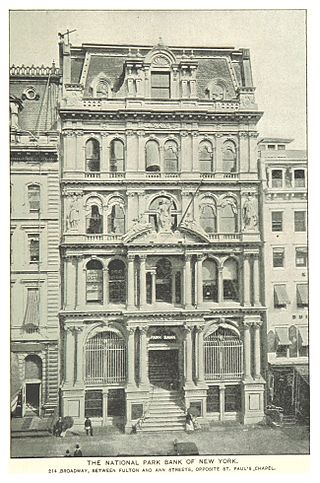
The National Park Bank was founded in 1856 in New York City, and by the late 19th century, it did more commercial business than any other bank in the country.

The Old City Hall is a Romanesque-style civic building and former court house in Toronto, Ontario, Canada. It was the home of the Toronto City Council from 1899 to 1966 and a provincial court house until 2023, and remains one of the city's most prominent structures.

The Chicago Cultural Center, opened in 1897, is a Chicago Landmark building operated by Chicago's Department of Cultural Affairs and Special Events. The Cultural Center houses the city's official reception venue, where the Mayor of Chicago has welcomed presidents, royalty, diplomats, and community leaders. It is located in the Loop, across Michigan Avenue from Millennium Park.
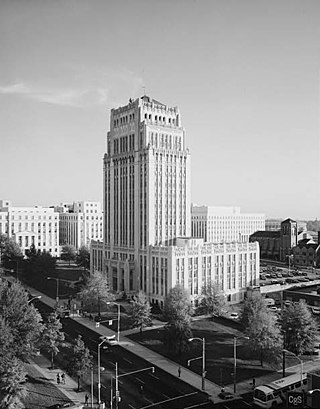
Atlanta City Hall is the headquarters of the City of Atlanta government. It was constructed in 1930, and is located in Downtown Atlanta. It is a high-rise office tower very similar to dozens of other city halls built in the United States during the same time period. Located in South Downtown, it is near other governmental structures, such as the Georgia State Capitol and the Fulton County Courthouse. The Neo-Gothic structure features many architectural details that have helped to make the building a historical landmark. It is Atlanta’s fourth city hall.

The New York State Capitol, the seat of the New York state government, is located in Albany, the capital city of the U.S. state of New York. The capitol building is part of the Empire State Plaza complex on State Street in Capitol Park. Housing the New York State Legislature, the building was completed in 1899 at a cost of US$25 million, making it the most expensive government building of its time. It was listed on the National Register of Historic Places in 1971, then included as a contributing property when the Lafayette Park Historic District was listed in 1978. The New York State Capitol was declared a National Historic Landmark in 1979.

The Allegheny County Courthouse in downtown Pittsburgh, Pennsylvania, is part of a complex designed by H. H. Richardson. The buildings are considered among the finest examples of the Romanesque Revival style for which Richardson is well known.

Madison Theatre is a historic theater in Peoria, Illinois, United States that opened on October 16, 1920, as a silent picture theatre.
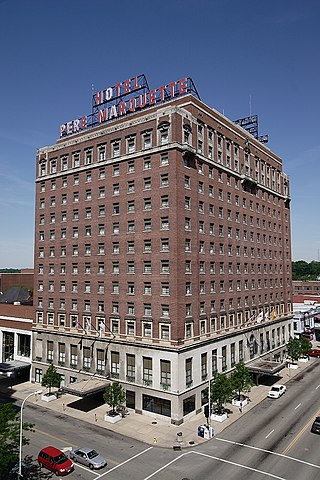
The Peoria Marriott Pere Marquette, is a historic 14-story hotel in downtown Peoria, Illinois, United States. Built in 1926, the building is Peoria's only surviving example of an upscale 1920s hotel. It was listed on the National Register of Historic Places in 1982.
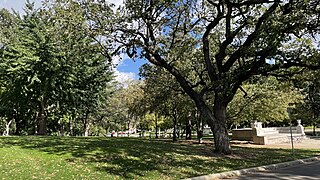
The University of Minnesota Old Campus Historic District is a historic district located in Minneapolis, Minnesota. Listed in the National Register of Historic Places since 1984, it includes a number of historic buildings that were constructed during the late 1800s and early 1900s, and represents the oldest extant section of the University of Minnesota campus. The general area was designed by landscape architect Horace W. S. Cleveland, who envisioned a park-like University. His plan, that he presented to the Board of Regents, went on to help form the Historic District. It is located directly to the north of the University's Northrop Mall Historic District.

The Cumberland Presbyterian Church, also known as the Peoria Musicians Club or Musicians Hall, is the oldest standing church building in Peoria, Illinois, United States. The church was constructed in 1856 as the First Cumberland Presbyterian Church. It was used by various churches and a synagogue until 1913, when it was bought by the American Federation of Musicians Local 26. The building was added to the National Register of Historic Places on March 18, 1980. The building is also a City of Peoria Historic Landmark as of March 1996. It is now a branch of Busey Bank.

The Grand Army of the Republic Memorial Hall, also known as the Greenhut Memorial, was constructed as a memorial to American Civil War soldiers in Peoria, Illinois, United States in 1909. It was designed by Hewitt & Emerson. The Classical Revival hall was dedicated to Joseph B. Greenhut, Captain of Company K, 82nd Illinois Volunteer Infantry Regiment. The building was added to the National Register of Historic Places on July 13, 1976, and was listed as an example of Beaux-Arts architecture. It is also listed as a City of Peoria Local Historic Landmark in March 1996.
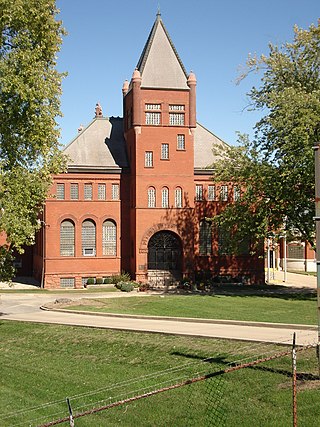
Peoria Waterworks is a building complex built in 1890 for the Peoria, Illinois water system.
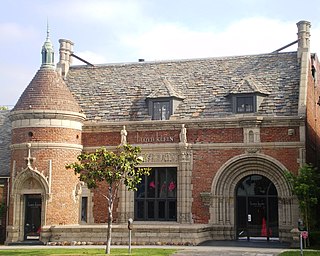
The Heinsbergen Decorating Company Building, also known as the AT Heinsbergen & Company Building, is a historic building on Beverly Boulevard in Los Angeles, California, United States. It was listed on the National Register of Historic Places in 1984.

The Whatcom Museum is a natural history and art museum located in Bellingham, Washington. Accredited by the American Alliance of Museums, the Whatcom Museum has a three building campus that includes Old City Hall, the Lightcatcher building, and the Syre Education Center.

The Quincy Street Historic District is a historic district located along the 100, 200, and 300 blocks of Quincy Street, along with 416 Tezcuco Street, in Hancock, Michigan. The Hancock Town Hall and Fire Hall is located in the district. The district was listed on the National Register of Historic Places in 1988.

Davenport City Hall is the official seat of government for the city of Davenport, Iowa, United States. The building was constructed in 1895 and is situated on the northeast corner of the intersection of Harrison Street and West Fourth Street in Downtown Davenport. It was individually listed on the National Register of Historic Places in 1982 and on the Davenport Register of Historic Properties in 1993. In 2020 it was included as a contributing property in the Davenport Downtown Commercial Historic District.

Academy of Our Lady and Spalding Institute were Catholic high schools across the street from each other in downtown Peoria, Illinois.

The Jamaica Savings Bank was a bank incorporated in 1866 in the Jamaica section of the borough of Queens in New York City. It had four branches across Queens before it was acquired by North Fork Bank in 1999, which itself was acquired by Capital One Bank in 2008.

Isaac Newton Walker was a pioneer farmer and merchant in Illinois, designer of the third Fulton County courthouse, member of the Illinois House of Representatives, and a close personal friend of Abraham Lincoln.

Lucy Flower Technical High School for Girls is a historic school building at 3545 W. Fulton Boulevard in the East Garfield Park neighborhood of Chicago, Illinois. It was built in 1927 as a larger home for the school of the same name, which was founded in 1911. Named for Lucy Flower, the school was the only all-female public high school in Chicago. Intended to parallel all-male schools such as Lane Tech and Crane Tech, Flower Tech combined vocational training and home economics in its curriculum. John C. Christensen, the Chicago Board of Education's chief architect, designed the school in the Collegiate Gothic style; inspired by English schools such as the University of Cambridge and University of Oxford, the style was a popular choice for schools at the time.
